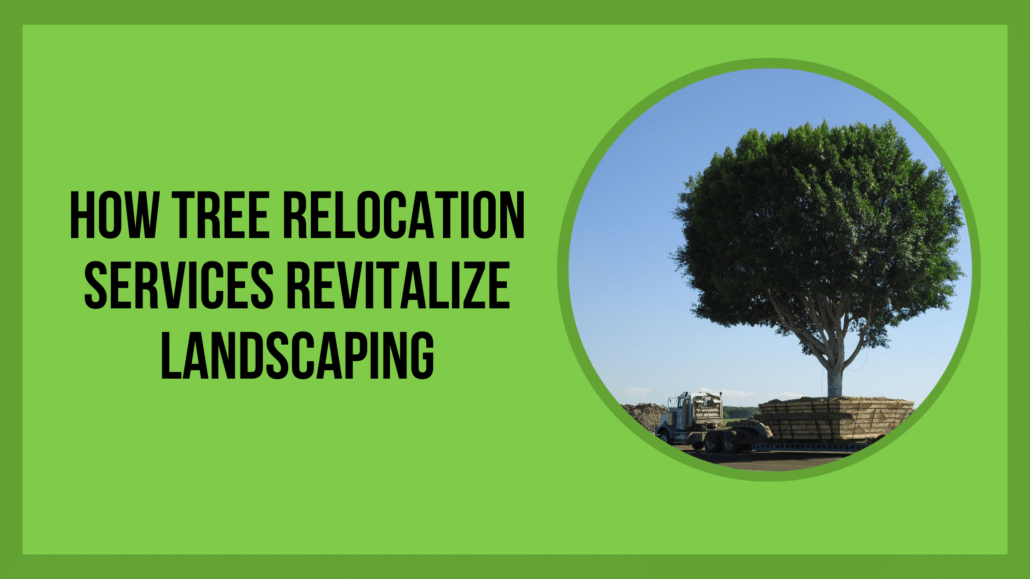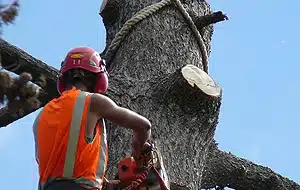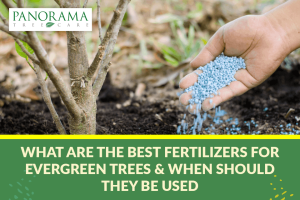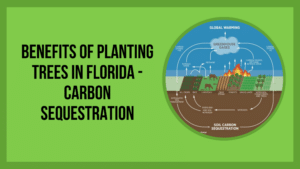Have you ever faced the challenge of keeping your beautiful landscaping intact while making room for new projects or designs? If so, tree relocation services might be the perfect solution.
They offer a way to preserve the beauty and environmental benefits of mature trees while making adjustments to your property.
Let’s explore how tree relocation works, its benefits, and why it’s worth considering.
Key Advantages of Tree Relocation Services
Tree relocation services offer a range of benefits that go far beyond simply saving a tree. They are a practical solution for preserving the aesthetic, ecological, and financial value of your property while ensuring that mature trees continue to thrive.
Here’s a detailed look at the major advantages:
Preserving Mature Trees
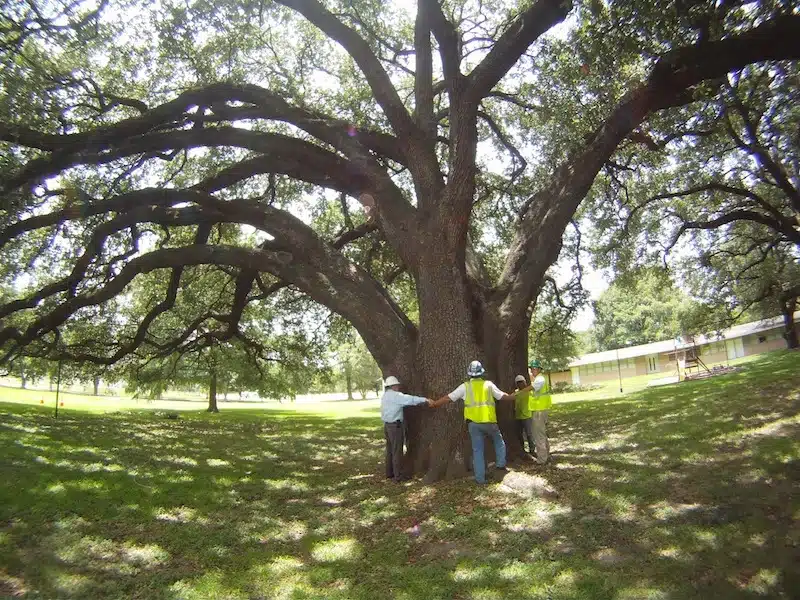
Mature trees are invaluable assets to any property. They take years, sometimes decades, to grow to their full potential, providing shade, improving air quality, and enhancing the overall appearance of the landscape. Removing them can leave a noticeable gap that’s hard to replace quickly.
Tree relocation preserves these majestic plants, allowing them to continue contributing to your landscape’s beauty and functionality in a new location.
Relocating mature trees is especially important for species that are slow-growing or rare. By saving these trees, you’re not only maintaining the unique character of your property but also helping conserve biodiversity.
Cost Savings on Landscaping
Replacing mature trees with new saplings may seem like a simpler option, but it comes with hidden costs. New trees require significant resources, including time, money, and effort, to reach the same maturity and size as an existing tree.
Relocating an established tree can often be more cost-effective, as it eliminates the need for purchasing and nurturing new plantings.
Additionally, well-placed mature trees can reduce energy costs by providing natural cooling in summer and windbreaks in winter, adding to their financial value.
Boosting Property Value
Trees are one of the most sought-after features in residential and commercial properties. A landscape dotted with mature, healthy trees significantly enhances curb appeal, making properties more attractive to potential buyers or tenants.
Studies have shown that properties with mature trees can fetch higher prices on the real estate market.
Relocating trees instead of removing them ensures that this value is retained. It also creates a sense of continuity and stability in your landscaping, which is appealing to homeowners and businesses alike.
Environmental Benefits
Tree relocation plays a crucial role in environmental conservation. Removing a tree permanently means losing its many ecological contributions, including:
- Carbon Sequestration: Trees absorb carbon dioxide, helping to combat climate change.
- Air Quality Improvement: They filter pollutants from the air, producing oxygen in the process.
- Wildlife Habitat: Mature trees provide homes for birds, insects, and small mammals, supporting local ecosystems.
By relocating trees, you’re not just saving a piece of your landscape—you’re preserving a vital component of the environment that benefits the planet as a whole.
Panorama Tree Service leads with eco-conscious tree services in Tampa Bay to ensure every decision you make is both sustainable and beautiful.
Reducing Waste and Landfill Contributions
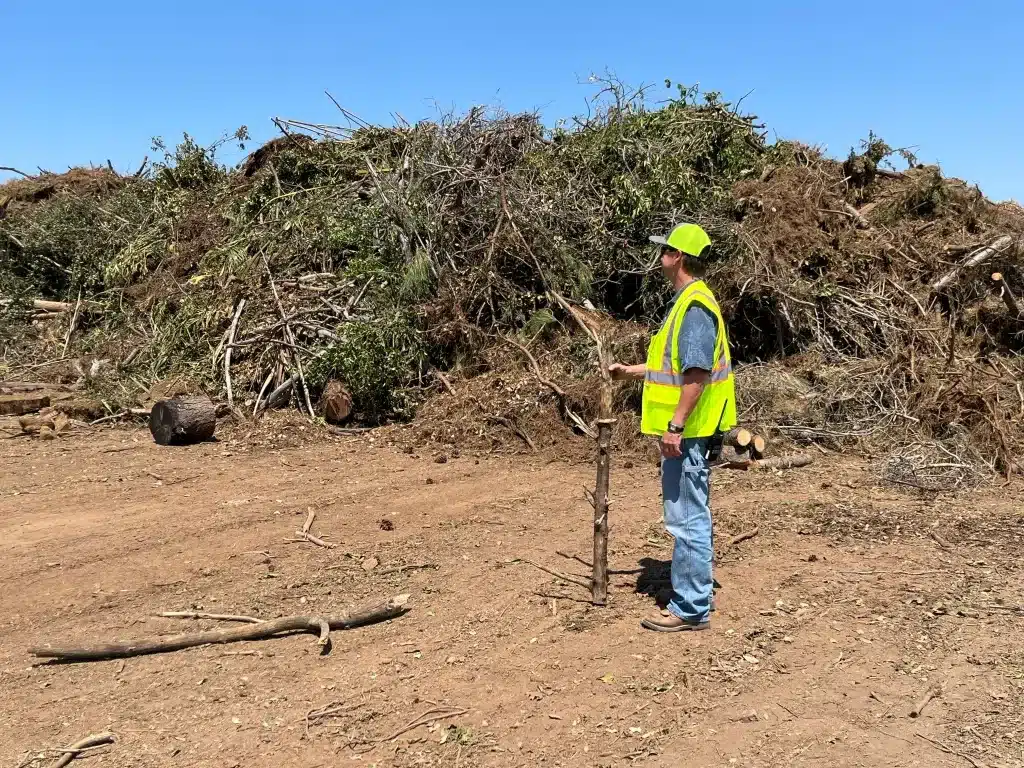
Tree removal often leads to debris being sent to landfills, which contributes to waste and environmental degradation. Relocating trees eliminates this waste and promotes sustainability by reusing existing natural resources.
This approach aligns with modern eco-conscious landscaping practices.
Maintaining Landscape Integrity
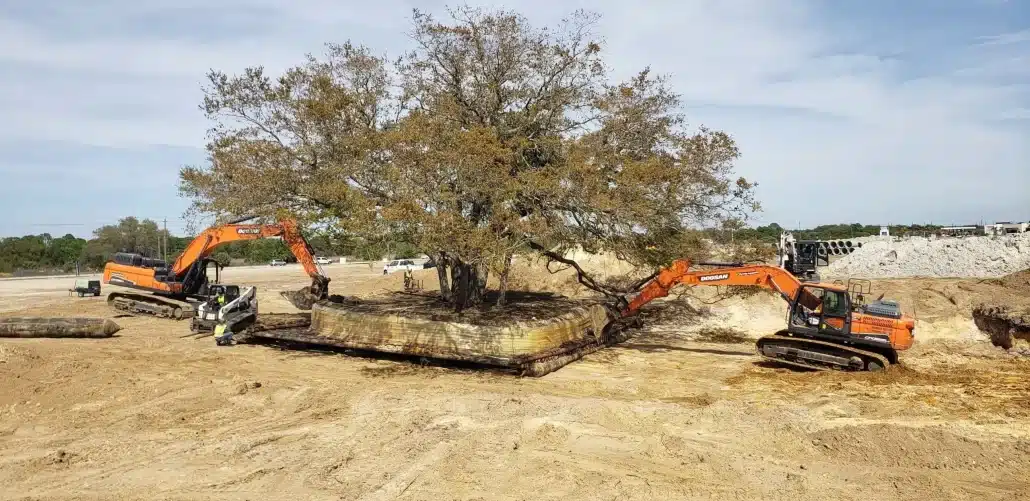
Sometimes, a tree is an integral part of your landscape design. Whether it’s a centerpiece in your garden or a natural screen providing privacy, its removal can disrupt the balance of the entire space.
Tree relocation helps maintain the integrity and harmony of your landscape design, ensuring that your vision remains intact even as you make changes.
Promoting Emotional and Historical Value
Certain trees may hold sentimental or historical significance. They could have been planted to mark a special occasion or be part of the local heritage.
Relocating these trees allows you to preserve their emotional and cultural importance, ensuring they remain a cherished part of the property.
Tree relocation services are more than just a technical solution—they represent a thoughtful, sustainable approach to landscaping that respects both the environment and the aesthetic value of your property.
By investing in tree relocation, you’re making a choice that benefits your land, your wallet, and the planet.
How Tree Relocation Works
Assessment and Feasibility Study
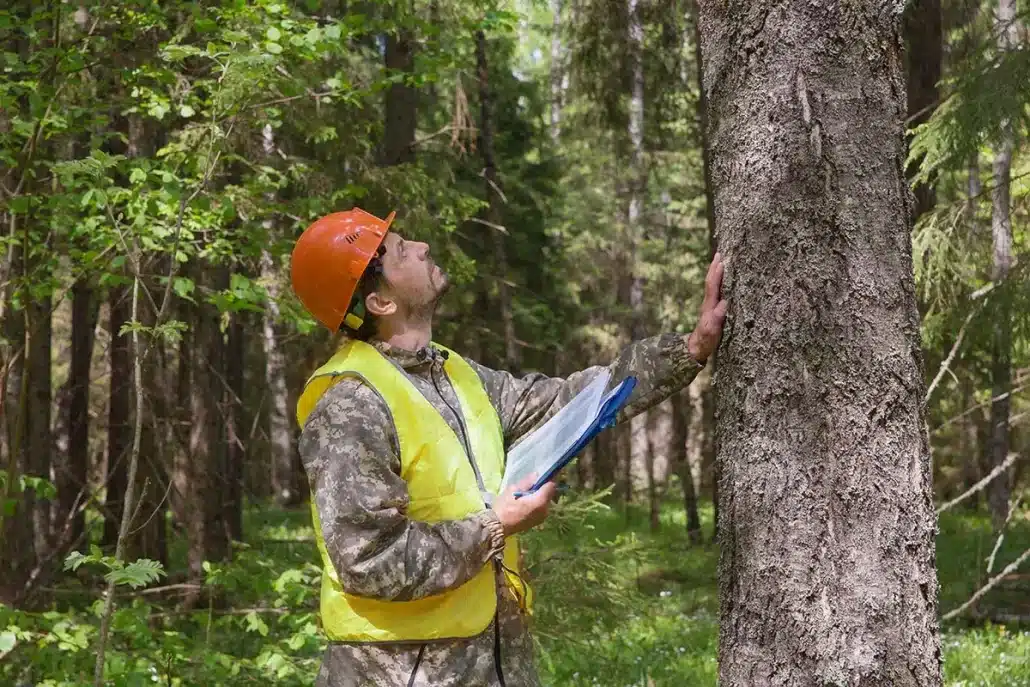
The first step is determining whether a tree can be relocated. Experts assess the tree’s health, size, species, and the conditions of both the current and new locations.
Planning and Preparation
Proper planning is crucial. This includes:
- Identifying the right season for relocation (typically dormant periods).
- Preparing the new site by ensuring it has suitable soil and conditions.
Using Specialized Equipment
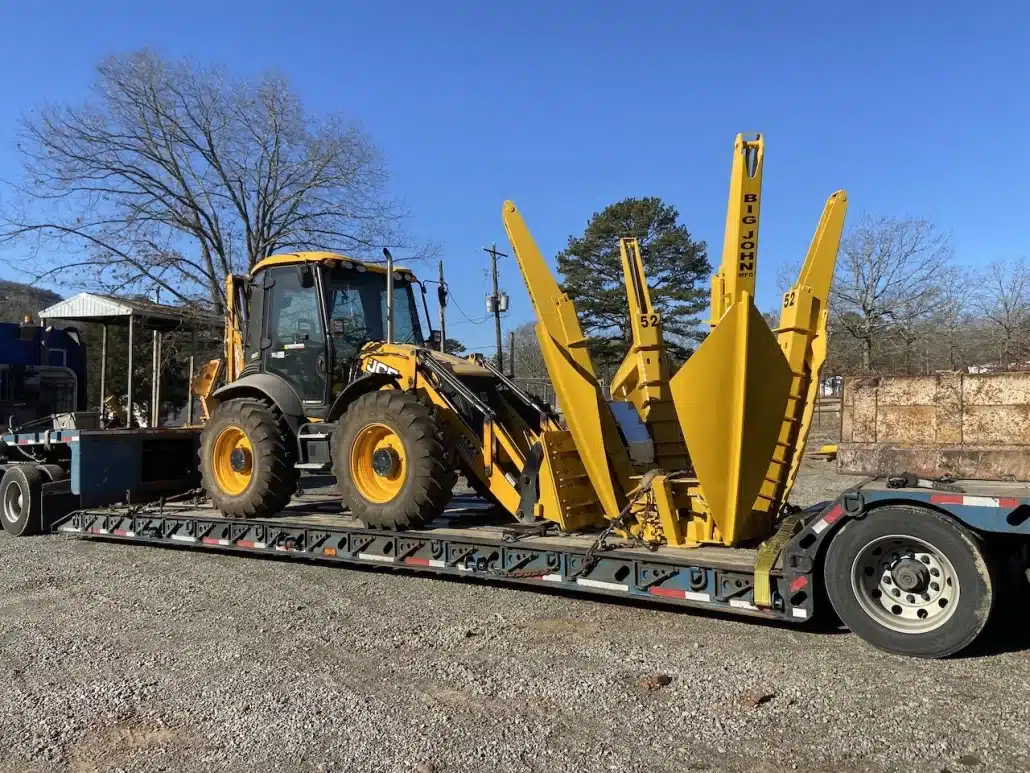
Moving a tree involves advanced tools like hydraulic tree spades and cranes. These minimize damage to the root system and ensure the tree’s safe removal.
Post-Relocation Care
After planting, the tree needs care to help it adapt. This may include watering schedules, mulching, and monitoring for pests or diseases.
Challenges in Tree Relocation
While tree relocation is an effective way to preserve and move valuable trees, the process is not without its challenges. It involves technical, environmental, and biological complexities that require careful planning and execution to ensure success.
Understanding these challenges highlights the importance of professional expertise in tree relocation.
1. Preserving the Root System
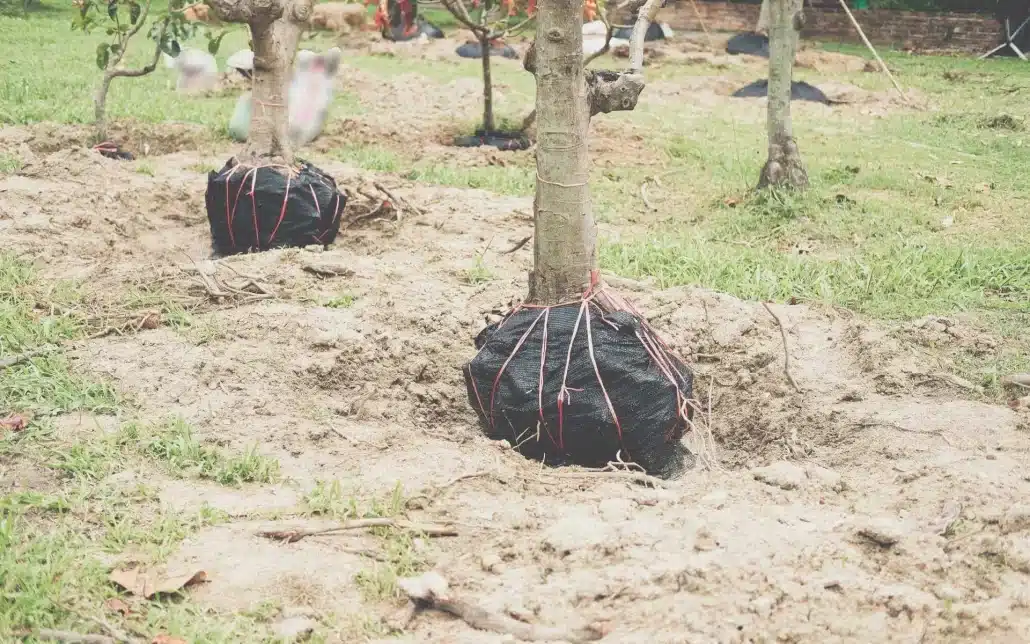
The root system is the lifeline of any tree, and its preservation during relocation is one of the most critical challenges. Trees have extensive roots that spread wide and deep into the ground, absorbing nutrients and water.
During relocation:
- Root Damage: Digging up a tree can sever or damage roots, reducing the tree’s ability to absorb essential nutrients.
- Taproots: Certain tree species have long taproots that are difficult to extract intact.
- Root Ball Stability: Keeping the root ball intact while minimizing soil loss is crucial for the tree’s survival.
2. Ensuring Tree Health
Relocating a tree can be stressful for it, leading to a phenomenon known as transplant shock. This stress can cause:
- Wilting and Leaf Drop: The tree may shed leaves as it struggles to adapt.
- Delayed Growth: Some trees take months or even years to fully recover.
- Increased Susceptibility to Pests and Diseases: A stressed tree is more vulnerable to infestations and infections.
Careful pre-relocation preparation and post-relocation care are necessary to mitigate these risks.
3. Dealing with Tree Size
The size of the tree plays a significant role in the complexity of relocation. Larger, mature trees present unique challenges:
- Heavy Equipment Needs: Specialized tools like cranes or hydraulic tree spades are required for handling large trees.
- Transport Logistics: Moving large trees, especially over long distances, requires secure transport arrangements to prevent physical damage.
Smaller trees are easier to relocate, but larger ones often require greater technical expertise and resources.
4. Soil Compatibility
The soil at the tree’s new location must be suitable for its growth. Trees are adapted to specific soil types, pH levels, and nutrient availability. Challenges include:
- Soil Mismatch: Differences between the original and new soil can affect the tree’s ability to establish roots.
- Compacted Soil: If the new site has compacted soil, it may hinder root penetration and nutrient absorption.
- Soil Preparation: The relocation process may involve conditioning the soil or adding amendments to match the tree’s needs.
5. Climatic and Environmental Factors
Relocating a tree involves moving it to a potentially different microclimate. This can pose challenges such as:
- Temperature Differences: The tree may struggle to adjust to variations in temperature, especially if moved during an active growth phase.
- Light Conditions: A change in sunlight exposure (e.g., from shade to full sun) can stress the tree.
- Moisture Levels: Trees accustomed to a specific level of moisture might face challenges if the new location is significantly drier or wetter.
6. Timing the Relocation
The timing of the relocation significantly impacts the tree’s survival:
- Dormant Seasons: Relocation is usually more successful during a tree’s dormant period, when it’s not actively growing. For deciduous trees, this is typically in late fall or early spring.
- Seasonal Risks: Extreme weather conditions like heavy rains, frost, or heat waves during relocation can harm the tree.
Scheduling relocation at the right time is vital to minimize risks and ensure the tree has the best chance of adapting to its new environment.
7. Transportation and Logistics
Transporting a tree from one location to another can be a logistical challenge, especially if the relocation involves long distances or urban settings. Key issues include:
- Space Constraints: Maneuvering large equipment and trees in tight spaces can be difficult.
- Traffic and Infrastructure: Navigating roads, overhead power lines, and urban infrastructure during transport requires careful planning.
- Secure Transport: Ensuring the tree is stable during transit to prevent damage to the branches, trunk, or root ball.
8. Post-Relocation Care
Even after successful relocation, ensuring the tree thrives in its new environment can be challenging. Post-relocation care involves:
- Consistent Watering: Providing adequate moisture without overwatering.
- Fertilization: Ensuring the tree has access to essential nutrients to support recovery and growth.
- Monitoring for Stress: Watching for signs of transplant shock, such as yellowing leaves or stunted growth, and addressing issues promptly.
9. Addressing Species-Specific Needs
Different tree species have unique characteristics that affect their relocation:
- Sensitive Species: Some trees are more sensitive to relocation than others, requiring extra care and attention.
- Exotic or Rare Trees: Special handling may be needed to preserve these species’ unique attributes and ensure their survival.
10. Balancing Costs and Effort
Tree relocation is an investment that involves significant costs for equipment, labor, and aftercare. Balancing these costs with the value of preserving a mature tree can be a challenge, particularly for property owners working within a budget.
Factors Influencing the Cost of Tree Relocation
Tree relocation is a complex process that involves multiple factors, each of which plays a role in determining the overall cost.
Understanding these factors can help you budget effectively and appreciate the level of expertise required to move trees safely and successfully.
Let’s break down the main factors that influence tree relocation costs.
1. Tree Size and Species
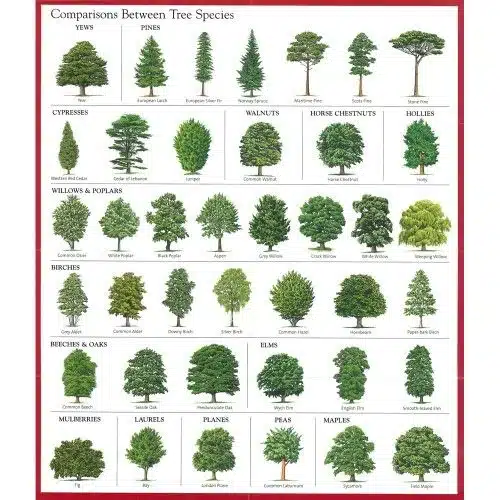
The size and type of tree are the most significant factors affecting relocation costs:
- Tree Height and Width: Larger trees require more resources to move, including larger equipment and additional labor. The size of the root ball also increases with the tree’s size, adding to the complexity.
- Species-Specific Requirements: Different tree species have unique needs. For example:
- Trees with delicate root systems may require extra care.
- Certain species, like oaks, have extensive root structures that are difficult to excavate and transport.
- Exotic or rare trees might need specialized handling and post-relocation care, increasing the cost.
2. Distance of Relocation
The distance the tree needs to be moved significantly impacts costs:
- Short-Distance Moves: Relocating a tree within the same property is generally more affordable as it doesn’t require long-distance transport or extensive logistics.
- Long-Distance Moves: Moving a tree to a different property or city involves higher costs due to transportation requirements, such as specialized trucks and equipment to secure the tree during transit.
- Infrastructure Challenges: Transporting trees through urban areas with narrow streets, overhead power lines, or other obstructions can add to the cost.
3. Soil and Site Conditions
The conditions at both the original and new locations play a crucial role:
- Soil Type: Hard or compacted soil requires more labor and equipment to extract the root ball. Similarly, preparing unsuitable soil at the new site, such as sandy or clay-heavy soil, may require soil amendments or treatments.
- Accessibility: If the site is difficult to access, such as a backyard with no direct equipment entry, additional effort and time are needed, raising the cost.
- Space Constraints: Limited space for equipment and tree handling can complicate the process and increase labor requirements.
4. Equipment and Labor Needs
The tools and workforce required for tree relocation depend on the complexity of the job:
- Specialized Equipment: Larger trees may need cranes, hydraulic spades, or flatbed trucks, all of which add to the cost. Smaller trees may only require manual labor and basic tools, making the process less expensive.
- Skilled Labor: Tree relocation requires trained arborists and technicians. The cost increases with the level of expertise needed, particularly for challenging or high-risk relocations.
5. Timing of the Relocation
The timing of the relocation can also influence costs:
- Seasonal Availability: Relocating trees during their dormant season (late fall or early spring for most species) is less stressful for the tree and typically easier for professionals. However, scheduling during peak seasons can lead to higher demand and increased prices.
- Urgency: Emergency relocations, such as those required due to construction deadlines or environmental risks, may incur additional charges for expedited services.
6. Post-Relocation Care
Aftercare is a critical component of tree relocation and can influence the total cost:
- Watering and Mulching: Newly relocated trees require consistent watering and mulching to reduce transplant shock and support recovery.
- Fertilization: Specialized fertilizers may be needed to replenish nutrients and encourage root growth in the new location.
- Monitoring and Maintenance: Arborists may need to visit periodically to monitor the tree’s health, which adds to the cost.
7. Permits and Regulations
Depending on your location, permits may be required to relocate certain trees, especially if they are protected species. These costs can vary:
- Municipal Permits: Local authorities may charge fees for the removal or relocation of large or heritage trees.
- Environmental Impact Assessments: If the relocation involves sensitive areas, such as wetlands or forested zones, additional assessments and paperwork may be needed.
8. Health and Condition of the Tree
The tree’s health prior to relocation affects the resources required:
- Healthy Trees: A healthy tree is easier to relocate and less likely to require extensive aftercare.
- Unhealthy or Damaged Trees: Trees that are diseased, pest-ridden, or structurally compromised may require additional treatments and care, increasing costs.
9. Weather and Environmental Factors
Weather and environmental conditions during relocation can also affect costs:
- Adverse Weather: Rain, snow, or extreme heat can make relocation more challenging, requiring additional time and precautions.
- Microclimate Adjustments: Trees relocated to areas with a significantly different climate may need extra care, such as irrigation systems or protective measures.
10. Tree Value and Sentimental Importance
The perceived value of the tree can influence the cost if additional care is required to preserve it:
- Valuable or Rare Trees: Highly prized trees, either for their rarity or beauty, may justify higher investment in their relocation.
- Sentimental Value: Trees with personal or historical significance often prompt homeowners to invest more in ensuring a successful relocation.
Choosing the Right Tree Relocation Service
Selecting the right tree relocation service is crucial to ensure the health and successful transfer of your trees. A professional service will have the expertise, equipment, and care required for such a delicate task.
Here are the key factors to consider when choosing a tree relocation service, along with reasons why Panorama Tree Service is the right choice.
Experience and Expertise
Tree relocation is a highly specialized process that requires technical know-how. Look for a service provider with extensive experience in relocating trees of various sizes and species.
An experienced company will understand:
- Tree biology and root systems, ensuring minimal stress during relocation.
- The specific needs of different tree species, such as oak, pine, or palm trees.
- Local soil and climatic conditions, helping the tree adapt to its new environment.
Panorama Tree Service has years of experience in handling challenging tree relocations, making them a trusted choice for homeowners and businesses alike.
Specialized Equipment and Techniques
Tree relocation often involves large and delicate trees that require advanced tools. Ensure the company you choose uses specialized equipment like hydraulic spades, cranes, and root protection systems to safely move trees.
They should also have access to transport solutions tailored for long or short distances.
At Panorama Tree Service, state-of-the-art equipment is used to ensure the safe and efficient relocation of trees. Whether you’re dealing with a large shade tree or a young sapling, their team has the tools and expertise to handle it.
Professional Credentials
Always check for certifications or memberships with professional organizations, such as the International Society of Arboriculture (ISA). Certified arborists bring additional assurance that the service provider adheres to industry standards and best practices.
Panorama Tree Service employs certified arborists with the training and knowledge needed to perform tree relocations while minimizing risks.
Customer Reviews and Testimonials
Reviews and testimonials from previous clients can provide insights into the quality and reliability of a service provider. Positive feedback often highlights:
- Timeliness and professionalism.
- Care taken to ensure tree health.
- Satisfaction with the overall relocation process.
Panorama Tree Service has a track record of positive client reviews. Explore their customer testimonials to see why they are a trusted provider in the tree care industry.
Comprehensive Services
Relocation involves more than just moving a tree; it also requires pre-relocation assessments, soil preparation, and post-relocation care. Choose a company that offers comprehensive services, including:
- Tree trimming and pruning: To reduce weight and stress before relocation. Check out their Tree Trimming Services for additional support.
- Root fertilization: To ensure the tree receives the nutrients needed for recovery. Explore their Root Tree Fertilization Services for expert care.
- Post-relocation monitoring: To ensure the tree adapts successfully to its new environment.
Transparency in Costs and Process
A reputable tree relocation service will provide a clear breakdown of costs and explain their process in detail. They should offer an upfront assessment to determine the feasibility of relocation and provide a fair, detailed estimate.
Panorama Tree Service offers transparent pricing and personalized consultations to help you understand every aspect of the relocation process.
Environmental Responsibility
Choose a service provider that prioritizes sustainable practices, such as minimizing waste and promoting tree preservation. This ensures that your relocation project contributes positively to the environment.
At Panorama Tree Service, sustainability is a core value. Their environmentally friendly methods help preserve mature trees and reduce the carbon footprint associated with landscaping changes.
Local Knowledge
Tree relocation success depends heavily on local conditions, including soil type, climate, and regional regulations. A service provider with local expertise will be better equipped to navigate these challenges.
As a locally based company, Panorama Tree Service has in-depth knowledge of the regional ecosystem and regulatory requirements. Whether you’re in a residential area or near sensitive habitats like mangroves, they can guide you through the process.
For specialized needs, such as Mangrove Trimming Services, their team ensures compliance with all environmental laws.
Why Choose Panorama Tree Service?
Panorama Tree Service stands out as a top choice for tree relocation thanks to:
- A team of certified professionals with years of experience.
- Advanced equipment and innovative techniques.
- A commitment to preserving tree health and the environment.
- Comprehensive tree care solutions, from relocation to Stump Removal Services.
Choosing the right tree relocation service ensures that your trees are moved safely, efficiently, and sustainably.
With Panorama Tree Service, you can trust that your trees are in the hands of experts who care about your landscape as much as you do.
Discover Panorama’s tree relocation services in Tampa to ensure your trees are moved safely, with expert care and attention to their long-term health.
Conclusion: Saving Your Landscaping with Tree Relocation
Tree relocation services are a lifesaver for anyone looking to preserve their landscaping while accommodating changes. They protect your investment, enhance your property’s value, and contribute to a greener environment.
Whether you’re redesigning your yard or making space for a new structure, tree relocation ensures your landscape stays beautiful and sustainable.
Ready to relocate your trees without compromising the environment? Schedule your eco-friendly tree relocation consultation today with our Tampa arborists and preserve your property’s beauty the responsible way.

